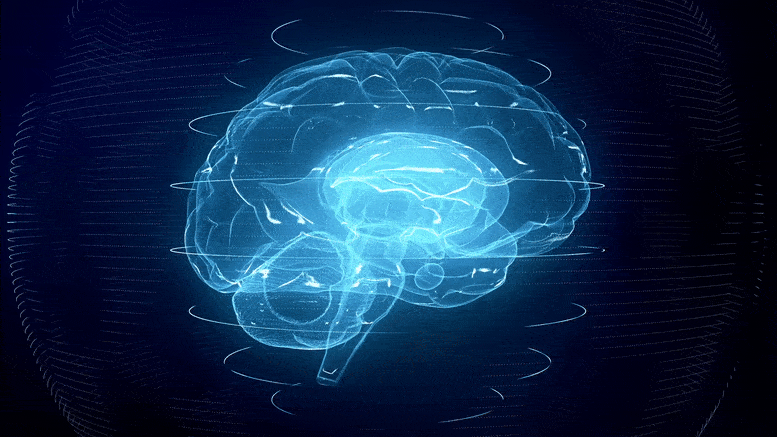Psychotherapy
Why does it work?

Why therapy works?
An intriguing question indeed. Based on Louis Cozolino’s book I’ll try to articulate a concise answer by the end of this project. For the next days I’ll learn all I can about it. I’ll start by writing in english for I am more objective while thinking in a language other than my mother tongue.
To begin I’ll say this: It works because it is a form of learning, unlearning and relearning. My ultra small answer for now is this: It works because it helps people trust in truth and be brave enough to become an optimist.
The Problem it Addresses
What makes therapy useful? What problem it is the solution to?
To put it simply I think what makes therapy useful is the fact that changing and knowing ourselves is hard. The problem is that we are slaves of ourselves, sort of. Therapy thus is the remedy for mind imprisonment.
The social branch of psychology also would add that therapy is useful to help individuals position themselves against injustice in their context.
In short, therapy solves the problem of us generating needless suffering and remain distracted of real problems of the world.

It can be said that therapy is our summed wisdom and knowledge on how to best guide and educate a person to be truly intelligent, not a well informed moron.
The sources of problems
Coordinating systems from different stages of evolution creates a lot of tension between competing needs. Our brains have multiple parallel tracks for processing conscious and unconscious information. The later-evolving systems, the slow system, gave rise to self-awareness and self-reflection, and since it is much slower them older systems, the conflict of priorities is natural and continual. It also creates inner tension and some dynamics in experience that tilt the scales in favor of early learnings.
Since most processing is unconscious and faster than consciousness, we are very vulnerable to misperceptions and misinformation that our minds assume to be true. All therapies addresses the processing bias, be it attempting to turn the unconscious conscious, conditioning the fast processing in an intelligent way or working on correcting thinking biases.
Why is hard to change patterns of behavior, even if they are problematic?

“Evolution is not a strategic plan for the future but an adaptation to present conditions.” – Louis Cozolino
A curious and interesting fact is that almost 90% of the input to the cortex comes from internal neural processing, not the outside world. The part that process all of this within us is the fast system, the older one, and when the conscious situation emerges, almost all already points to the sameness of our past learnings and tendencies. The conclusion is that the game is rigged!
When our ‘freedom and self-awareness’ are on, the situation is already 90% filled with activated implicit memories, activated in complex patterns of behavior, and repeated experiences drawn from the past reinforcing biased conclusions. It is as if when the situation presents the options of actions available, the list have been trimmed so badly that almost all options will likely produce an experience similar to what you already believe to be true.
Another reason: during our development as children, the fast systems matured first (in eight months), and it learns a lot without our brain technology of memory and superior cognitive abilities (it takes 20 years to fully develop). We end up storing loads of lessons in unarticulated and unrepresented ways. We learned ‘unaccessible’ information, and live by these truths without ever consulting them until therapy work happens or very deep level conversations with intimate partners or friends. It explains why our early learnings has such a powerful and enduring influence on our lives.
How and Why Therapy Works

#1 Dismistify psychological frames that creates needless suffering
We come to understand how our brain responds to stress, and how that response generates suffering and symptoms. So, the natural reasoning is to learn better ways to process brain stress, both punctual and chronic types. A natural discovery is to demystify forms of suffering and simply recognize the facts of our biology and personal history. In simpler terms, psychotherapy educate us to diminish useless and ill informed opinions and shred shame, guilt and self-punishment patterns based of arbitrary positions.
#2 Optimize our social nature and from it build psychological skills to address anxiety and mental rigidity
Our brain is a social organ, so we must recognize the power of relationships to regulate anxiety and stimulate learning. So we learn, or simply experience in, through therapy, that we cannot properly function in social isolation and it is on our best interest to leverage the social world to be healthy. The first step is to build up a strong relationship with the therapist, that will function as a microcosm of your social world, a lab to learn, practice and reflect upon the methods to effectively play the social game.
It takes a combination of courage, emotional support, and the ability to imagine success to risk new forms of thinking and behaving, so the bond with the therapist is a powerful source of healing. The secure attachment created allows the possibility of articulating collaboratively experiences without shutting down the language regions of the brain, for when the stress is high one of the amygdala’s effect is the suppression of language. Fear inhibits executive functioning, problem-solving abilities, and emotional regulation, and so the natural order of business is to talk within a psychologically safe space.
It is through the social leverage that is possible to address fear itself. It is known that the amygdala have an elephant memory, it never forgets, so the only option to overcome what we fear, is to have better experiences with it that teaches us that the specific source of our fears are not that great. Success in dealing with the threatening situation is the key factor to not be dominated by it.
Another important piece of information is that fear is reinforced through avoidance patterns of behavior and thinking. Naturally, is through the secure attachment with the therapist that we have an opportunity to try and experiment do what we fear, have good results and fruitful reflections, and thus decrease the power of our fears. A decrease in avoidance behaviors is highly correlated with therapeutic success.
In short, therapy gives us courage and direction. With those, we train our brain structures to learn how intensely to react to certain sources of suffering. We access our brain through our minds, or psychological tools, language mostly, and learn to address stress effectively by articulating our experiences and noticing the natural patterns of our biology to not be prisoners of them.
#3 Increase neuroplasticity to better learn funcional mind frames
Change depends upon the activation of neuroplastic processes. For any change to occur, our brains have to undergo structural changes that will be reflected in our thoughts, feelings and behaviors. Thus, the work of therapy is to increase neuroplasticity for its effect in learning fertility.
Therapy is then, first: a structured approach to decrease fear and its effects through a secure relationship. This is the first condition that works as a platform for change to be possible. We aim at stimulating neuroplasticity and psychological safety.
Second, therapy is a dialogue designed to encourage learning of new psychological patterns and articulation of past experiences. It is achieved by crafting of coherent narratives of identity and social belonging, and organized thoughts about critical issues. This process in itself teaches the skills of metacognition, the reflective capacity that have huge effects in the quality of social relations and emotion regulation. With it one starts claiming greater authorship of his self-narrative, greater relevance for his imagination and input, and finally, greater self-acceptance and compassion.
Underneath the narrative crafting and skill learning, what is happening in the neuroscientific standpoint, is an integration of psychic and neural systems, that is, through the ‘mind’ one operates the brain. The effect of this is greater baseline psychological flexibility, or greater neuroplasticity. The person becomes increasingly more receptive to learning and adaptability.
Third, therapy is a safe space to craft experiments and reflect on the results objectively, in order to reinforce lessons that favor neural and psychic integration. That is, effectively tuning the brain structures, through language, to react assertively to stress. Only through talking and reflecting it is not possible to change hard wired lessons from one’s past, it is necessary to muster courage and intelligence to approach trauma and scars directly. Only through experience in real life, outside the therapeutic setting, one can educate the brain structures.

